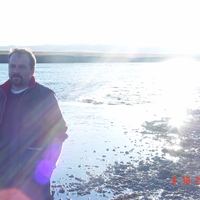Papers by Dr. med. Klaus Schlueter-Brust
Proceedings Of The Institution Of Mechanical Engineers, Part H: Journal Of Engineering In Medicine, Apr 12, 2010
Over the past two decades, orthopaedics has gone through major changes, principally in the surgic... more Over the past two decades, orthopaedics has gone through major changes, principally in the surgical treatment options for articular defects of the knee. This paper explores the advantages and shortcomings of the current surgical treatment modalities for cartilaginous defects in the knee. Emphasis is placed on current techniques in knee arthroplasty, including a view on the future of orthopaedic knee surgery.
Journal of Personalized Medicine, Aug 10, 2021
3D printing in medicine, Nov 7, 2022
Journal of Orthopaedic Research

Journal of Personalized Medicine, 2021
The accuracy of the implant’s post-operative position and orientation in reverse shoulder arthrop... more The accuracy of the implant’s post-operative position and orientation in reverse shoulder arthroplasty is known to play a significant role in both clinical and functional outcomes. Whilst technologies such as navigation and robotics have demonstrated superior radiological outcomes in many fields of surgery, the impact of augmented reality (AR) assistance in the operating room is still unknown. Malposition of the glenoid component in shoulder arthroplasty is known to result in implant failure and early revision surgery. The use of AR has many promising advantages, including allowing the detailed study of patient-specific anatomy without the need for invasive procedures such as arthroscopy to interrogate the joint’s articular surface. In addition, this technology has the potential to assist surgeons intraoperatively in aiding the guidance of surgical tools. It offers the prospect of increased component placement accuracy, reduced surgical procedure time, and improved radiological and ...

HIP International, 2009
CT when compared to plain radiograph is known to be a more valid measure of acetabular component ... more CT when compared to plain radiograph is known to be a more valid measure of acetabular component orientation. The validity of plain radiographs may be further compromised by large diameter metal femoral heads because of obscuration of the acetabular rim. We quantified this effect by measuring acetabular cup angles (inclination and version) of 49 metal on metal (MOM) hip resurfacings using plain radiographs and 3D CT based measurement. Bland-Altman plots revealed poor agreement between plain radiographic and CT based measurement with 2 standard deviation limits of agreements of: +7 to –15 degrees for cup inclination angle; and +16 to –31 degrees for cup version angle. The large differences between plain radiographic and CT measurement of cup positions are probably due to the large diameter metal femoral head that can obscure the cup margin. We have used a metal artefact reduction CT protocol with a 3D imaging software package to overcome this problem and measure cup position relative...
Proceedings of the Institution of Mechanical Engineers, Part H: Journal of Engineering in Medicine, 2010
Over the past two decades, orthopaedics has gone through major changes, principally in the surgic... more Over the past two decades, orthopaedics has gone through major changes, principally in the surgical treatment options for articular defects of the knee. This paper explores the advantages and shortcomings of the current surgical treatment modalities for cartilaginous defects in the knee. Emphasis is placed on current techniques in knee arthroplasty, including a view on the future of orthopaedic knee surgery.

Orthopaedic Proceedings
3D printing is rapidly being adopted by manufacturers to produce orthopaedic implants. There is a... more 3D printing is rapidly being adopted by manufacturers to produce orthopaedic implants. There is a risk however of structural defects which may impact mechanical integrity. There are also no established standards to guide the design of bone-facing porous structures, meaning that manufacturers may employ different approaches to this. Characterisation of these variables in final-production implants will help understanding of the impact of these on their clinical performance.We analysed 12 unused, final-production custom-made 3D printed acetabular cups that had been produced by 6 orthopaedic manufacturers. We performed high resolution micro-CT imaging of each cup to characterise the morphometric features of the porous layers: (1) the level of porosity, (2) pore size, (3) thickness of porous struts and (4) the depth of the porous layers. We then examined the internal cup structures to identify the presence of any defects and to characterise: (1) their total number, (2) volume, (3) spheri...








Uploads
Papers by Dr. med. Klaus Schlueter-Brust